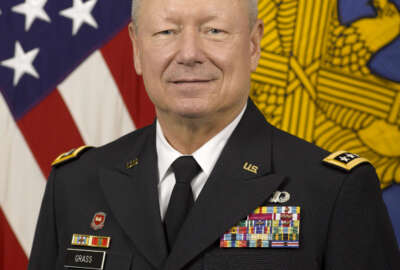Almost two years after the National Guard announced it was having trouble filling cyber positions, the military component is still stuck in the same spot.
National Guard Chief Gen. Joseph Lengyel says the Guard is having issues filling required cyber spots past 2018.
“Our cyber pipeline is still constrained. Some of it is constrained by our ability to find people that can fill it, who can actually qualify to go to the slots,” Lengyel said Dec. 14 during a speech at the Air Force Association in Arlington, Virginia.
Lengyel said the requirements from the Air Force have been easier to fill compared with the Army requirements.
The Army “has been more competitive getting the spots. Part of that has been because on the Army side we have 12 cyber protection teams that we are building and the Army sees those as surge requirements. They’re not part of the Cyber Mission Force, whereas all of our cyber force structure around the Air Force is part of the Cyber Mission Force,” Lengyel said. “We are getting the slots, but they are slow and hard to come by.”
The Cyber Mission Force is made of up 133 teams under the jurisdiction of U.S. Cyber Command. Their goal is to protect Defense Department networks, protect the homeland from cyber intrusions and to aid in offensive missions.
The National Guard plans to have 30 cyber units that will be stationed in at least 30 states by fiscal 2019.
Former National Guard Chief Gen. Frank Grass told Congress in 2016 that the National Guard was also facing a training backlog.
Sen. Jerry Moran (R-Kan.) brought up one example: at McConnell Air Force Base in Kansas there is a shortage of cyber trainers for the number of Air National Guard cyber units.
“There is a sufficient number of people that want to fill those slots, but an insufficient number of people who are training those individuals to do so,” Moran said. “One of the new cyber squadrons at McConnell has 42 vacancies. I don’t think this is because we can’t find the individuals who want to fill those 42 vacancies, it’s because we only have three of those folks who are in a position to receive the training this fiscal year.”
Grass said cyber units go through three types of training, which include basic skills, certifications for working in a cyber range and joint training.
“Our goal for cyber defense is to train, equip and provide highly-skilled forces responsive to the needs of the nation,” Grass said in December. “Working with the Army and Air Force, our cyber squadrons and teams will provide trained and ready soldiers and airmen to support requirements established by the services and U.S. Cyber Command.”
The Air National Guard implemented rapid training courses early this year to cut down on some of the backlog.
The Air Guard sends active duty and Guard personnel to an “adaptive” training course in Little Rock, Arkansas to give them basic cyber skills.
From there they are sent to Keesler Air Force Base in Biloxi, Mississippi, “to get the top off of cyber war training and then get them out the door, not in two years but in some cases two months,” said Air National Guard Director Lt. Gen. L. Scott Rice during a Feb. 7 Air Force Association event in Arlington, Virginia. “We are really rapidly getting people based upon their capability and what they came in the door with out the other end of the door faster and quicker. That’s a pretty innovative thing we are doing down there trying to ‘modulize’ our training and adapt it to individuals.”
The first class of 20 students will graduated in March. The classes are run every three months.
Copyright
© 2024 Federal News Network. All rights reserved. This website is not intended for users located within the European Economic Area.
